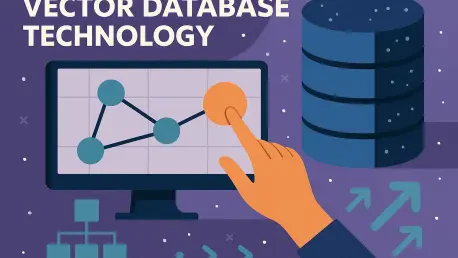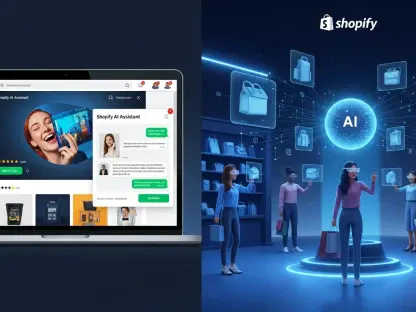Today, we’re thrilled to sit down with Laurent Giraid, a renowned technologist whose expertise in artificial intelligence has made him a leading voice in the field. With a deep focus on machine learning, natural language processing, and the ethical implications of AI, Laurent has been at the forefront of discussions about emerging technologies like vector databases. In this conversation, we’ll explore the rollercoaster journey of vector databases over the past few years, diving into the initial excitement, the sobering challenges, and the evolving paradigms like hybrid search and GraphRAG that are shaping the future of AI-driven retrieval systems. Let’s uncover how the industry has moved from hype to practical innovation.
What sparked the massive excitement around vector databases a couple of years ago, and why did they become such a focal point for generative AI?
The excitement around vector databases in 2024 was driven by a fundamental shift in how we imagined search could work. The promise of searching by meaning, rather than rigid keywords, felt revolutionary. It tapped into this dream of making AI understand context and nuance, which was especially critical for generative AI applications. Everyone saw vector databases as the backbone for connecting vast enterprise data with large language models, creating systems that could seemingly “think” and retrieve relevant information intuitively. Billions of dollars poured in because the potential felt limitless—think personalized recommendations, semantic search, or even automated insights from unstructured data. It was billed as the missing piece to make AI truly intelligent.
How did the concept of searching by meaning instead of keywords capture so much attention across industries?
Searching by meaning was a game-changer in theory because it addressed a pain point we’ve all felt—keyword searches often miss the mark. You type something into a search bar, and if you don’t use the exact term, you’re out of luck. Vectors offered a way to bridge that gap by representing data as points in a high-dimensional space, where proximity meant similarity in meaning. This captured imaginations because it felt like AI was finally “getting” us. Industries like e-commerce, healthcare, and finance saw potential for better customer experiences or faster insights from complex datasets. It wasn’t just tech geeks; business leaders were hooked on the idea of unlocking hidden value in their data with this semantic approach.
With so many organizations failing to see returns on their generative AI investments, what do you think went wrong at a fundamental level?
The statistic that 95% of organizations saw no measurable returns on gen AI initiatives is staggering but not surprising. The core issue was a mismatch between hype and reality. Many companies rushed into these projects expecting plug-and-play solutions—dump your data into a vector database, hook up a model, and magic happens. But the real world isn’t that tidy. Data quality, integration challenges, and a lack of clear use cases derailed many efforts. Plus, there was often a skills gap; teams didn’t have the expertise to fine-tune embeddings or build the surrounding infrastructure needed to make these systems work. It was a classic case of overpromising and under-delivering on the timeline for ROI.
Were there specific limitations with vector databases themselves that contributed to these disappointing outcomes?
Absolutely. Vector databases, while powerful for similarity search, aren’t a silver bullet. One big limitation is their “close enough” nature. They excel at finding approximate matches, but in scenarios needing precision—like pulling up a specific error code from a manual—they can fail spectacularly by serving up something similar but wrong. Also, they often struggled with scalability and cost when handling massive datasets in production environments. Many organizations didn’t anticipate the need for additional layers like metadata filtering or reranking, which added complexity and cost. So, while the tech was innovative, it wasn’t ready to stand alone for most real-world needs.
Looking at a key player in this space that’s now reportedly exploring a sale, what do you think led to such a dramatic shift in their fortunes?
It’s a tough story to watch unfold. This company was once the poster child for vector databases, raising huge funding rounds and signing big-name clients. But the market shifted under their feet. They faced intense competition from open-source alternatives that offered similar functionality at a fraction of the cost. On top of that, established database systems started adding vector search as a feature, so customers began asking why they needed a standalone solution. Differentiation became nearly impossible, and customer churn likely grew as a result. It’s a classic case of a promising startup getting squeezed between free options and incumbent giants.
How has the rise of hybrid search, combining keywords and vectors, changed the way we approach retrieval systems?
Hybrid search has become the new standard because it addresses the shortcomings of pure vector search while leveraging its strengths. Vectors are great for semantic understanding and finding conceptually similar content, but they lack precision. Keywords, on the other hand, are exact but rigid. By combining the two, you get the best of both worlds—fuzziness for broad relevance and exactness for pinpoint accuracy. For example, in a customer support app, hybrid search can pull up semantically related articles while ensuring the exact product code or error message is matched. It’s a pragmatic evolution, and most serious applications now rely on this dual approach to deliver reliable results.
Why do you think so many vector database startups struggled to carve out a unique space in such a crowded market?
The market for vector databases became oversaturated quickly. You had dozens of startups popping up, each claiming subtle differences in performance or features, but to most buyers, they all looked the same—store vectors, retrieve nearest neighbors, repeat. Without a clear differentiator, it was hard to justify premium pricing or loyalty. Meanwhile, bigger players with established ecosystems started offering vector search as an add-on, which made standalone startups seem less necessary. It’s a textbook commoditization problem; when a technology becomes a checkbox feature, niche players struggle to survive unless they pivot or innovate fast.
Can you share an example of a real-world challenge where vector search alone fell short, and how developers adapted to overcome it?
One classic example is in technical support systems. Imagine a user searching for “Error 221” in a product manual. A pure vector search might return “Error 222” because the embeddings are close in meaning, but that’s useless—or worse, misleading—for the user who needs the exact fix. Developers quickly realized this limitation and started layering on solutions. They brought back keyword matching to ensure precision for specific terms, added metadata filters to narrow down results, and even introduced reranking algorithms to prioritize correctness over raw similarity. It was a wake-up call that vectors are a tool, not the whole toolbox.
With new paradigms like GraphRAG gaining traction, how do you see these approaches enhancing the capabilities of retrieval systems?
GraphRAG, or graph-enhanced retrieval augmented generation, is exciting because it adds a layer of relational understanding that vectors alone can’t capture. Vectors flatten data into similarity scores, but graphs preserve the connections between entities—like how concepts, people, or events are linked. This makes retrieval much richer, especially for complex queries that require multi-hop reasoning, like in finance or healthcare. Benchmarks show dramatic improvements in answer correctness when graphs are paired with vectors. It’s a step toward building retrieval systems that don’t just find stuff but understand the context and relationships, grounding AI outputs in deeper, more accurate knowledge.
What is your forecast for the future of retrieval systems and the role of vector databases within them?
Looking ahead, I think vector databases will settle into a foundational but not standalone role. They’ll be a critical component of broader, unified retrieval stacks that blend vectors, graphs, keywords, and even multimodal data like images or video. We’re moving toward systems where AI dynamically chooses the best retrieval method for each query, orchestrated by smarter models. Retrieval engineering will become a distinct field, focusing on tuning and layering these approaches. My forecast is that by 2027 or so, vector databases won’t be the shiny object anymore—they’ll be legacy infrastructure, essential but overshadowed by adaptive, context-aware platforms that prioritize precision and relevance over any single technology.









